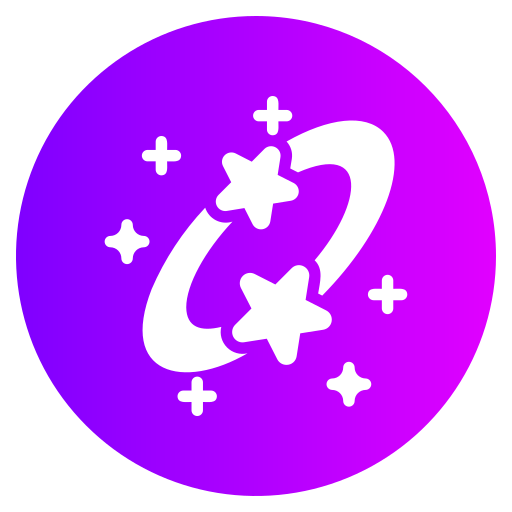Astrological compatibility is an intriguing concept that blends the ancient art of astrology with the nuances of human relationships. The idea that the positions of celestial bodies can influence our relationships is as captivating as it is complex. If you’ve ever wondered why you connect so deeply with some people while others seem to clash with you, the stars might have more to say about it than you think. Let’s delve into the secrets of astrological compatibility and uncover what the stars have to reveal about your relationships.
The Basics of Zodiac Signs
Understanding the Zodiac Wheel
At the heart of astrological compatibility lies the zodiac wheel, a celestial circle divided into twelve segments, each representing a different zodiac sign. These signs—Aries, Taurus, Gemini, Cancer, Leo, Virgo, Libra, Scorpio, Sagittarius, Capricorn, Aquarius, and Pisces—are each associated with unique traits and characteristics. Understanding these basic attributes is essential for deciphering compatibility.
- Aries is known for its fiery enthusiasm and leadership qualities.
- Taurus is characterized by its stability and love for comfort.
- Gemini thrives on communication and versatility.
- Cancer values emotional connection and home life.
Each sign has its own way of interacting with the world and with others, which plays a crucial role in how well two people get along.
Elemental Connections
The zodiac signs are also categorized into four elements: Fire, Earth, Air, and Water. These elements help in understanding the fundamental nature of each sign:
- Fire signs (Aries, Leo, Sagittarius) are passionate and dynamic.
- Earth signs (Taurus, Virgo, Capricorn) are practical and grounded.
- Air signs (Gemini, Libra, Aquarius) are intellectual and communicative.
- Water signs (Cancer, Scorpio, Pisces) are emotional and intuitive.
Compatibility often depends on how these elements interact. Fire and Air signs, for instance, tend to energize and inspire each other, while Earth and Water signs often form deep, nurturing connections.
Synastry: The Art of Relationship Analysis
Birth Chart Comparisons
In astrology, synastry is the technique used to compare two individuals’ birth charts to assess compatibility. Each birth chart maps out the positions of the planets at the exact time and place of a person’s birth, revealing their inherent traits and tendencies. By overlaying these charts, astrologers can pinpoint how the planets in one person’s chart interact with those in another’s.
- Sun Sign Compatibility: The Sun sign is crucial as it represents core identity and ego. Harmonious Sun sign aspects often lead to a natural understanding and mutual respect.
- Moon Sign Compatibility: The Moon sign governs emotions and inner self. Compatibility here indicates emotional resonance and shared needs.
Key Aspects and Their Influence
Astrologers also look at specific aspects—angles formed between planets in the charts—to gauge compatibility. Key aspects include:
- Conjunction: When planets align closely, it signifies strong, sometimes intense connections.
- Trine: A harmonious angle that suggests ease and natural affinity.
- Square: Represents challenges or conflicts but also opportunities for growth.
These aspects reveal how well two people’s energies blend or clash, affecting the overall harmony of the relationship.
The Role of Compatibility in Different Relationship Types
Romantic Relationships
In romantic partnerships, astrological compatibility can shed light on the strengths and potential pitfalls of the relationship. For instance, a Leo’s exuberance might mesh beautifully with a Sagittarius’s adventurous spirit, while a Scorpio’s intensity might require extra understanding from a more laid-back Libra.
Friendships and Family Dynamics
Compatibility isn’t confined to romantic relationships. Understanding astrological dynamics can also enrich friendships and family connections. For instance, an Aquarius and a Gemini might enjoy a seamless friendship due to their shared intellectual curiosity and flexibility, while a Capricorn might have to navigate the complexities of a relationship with a free-spirited Sagittarius.
Workplace Harmony
Astrology can even provide insights into professional relationships. Knowing whether you and your colleagues have compatible signs can help in understanding work styles and communication preferences, fostering a more harmonious work environment.
Beyond the Basics: Deepening Your Astrological Insights
The Role of Ascendant Signs
While Sun and Moon signs are essential, the Ascendant sign (or Rising sign) adds another layer to compatibility analysis. The Ascendant sign represents the outward persona and how individuals present themselves to the world. Understanding this can help in grasping the initial impressions and dynamics in a relationship.
Planetary Placements and Their Effects
In addition to Sun, Moon, and Ascendant signs, other planetary placements—like Venus (love), Mars (passion), and Mercury (communication)—play crucial roles. For instance, Venus in Taurus and Mars in Scorpio can indicate a passionate and enduring romantic connection, while Venus in Gemini and Mars in Leo might bring a more playful, flirtatious energy.
Astrological compatibility is a complex and multifaceted field that goes beyond simple zodiac sign pairings. By delving into synastry, understanding elemental interactions, and considering the broader spectrum of planetary influences, you can gain a richer understanding of your relationships and their potential for harmony.
